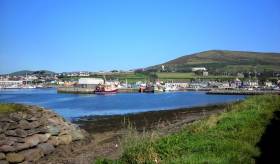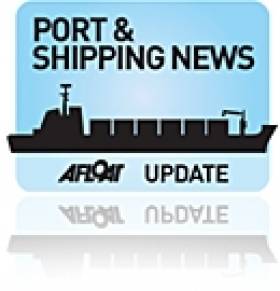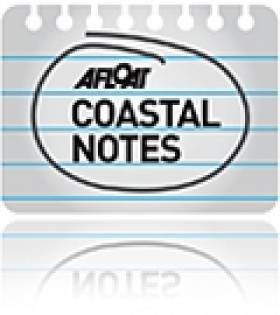Displaying items by tag: Dingle Fishery Harbour Centre
Dredging Works At Dingle Fishery Harbour Centre
#MarineNotice - Dredging works were set to commence this week at Dingle Fishery Harbour Centre and are expected to be ongoing until the end of February 2018.
The works will involve the dredging of the north/south section of the main navigation channel and an area between the breakwaters off the main quay head.
The vessel Grete Fighter (Callsign: OZLP2) and the jack-up barge Yo Yo will be onsite and will maintain a VHF watch on Channel 16/14.
Three Special Mark (monitoring buoy) Fl Y 2s will be in positions 150 meters east, west and south of the north/south channel within the fishery harbour centre.
The Grete Fighter will be transiting to an approved dumpsite east of Beenban Head marked by four special marks.
Port hand marks and leading lights will be affected during the course of the works.
For safety reasons, mariners are requested to proceed slowly and with caution when in the vicinity of the dredging vessels in the fishery harbour centre and to give the works a wide berth.
Contact details and co-ordinates of the dump area are included in Marine Notice No 53 of 2017, a PDF of which is available to read or download HERE.
New Dingle Harbour Master Appointed
#dingle – A new harbour master has been appointed to Dingle Fishery Harbour Centre in County Kerry, the most westerly harbour in Europe.
Captain Nigel Collins has taken up the position having previously been Assistant Inspector of Navigation with Waterways Ireland.
The position in the port has been vacant since earlier this year, when Lieutenant Commander Brian Farrell retired from duty.
The Kerry harbour has a marina and is a popular choice with those cruising the south west coast.
The Department of Transport, Tourism and Sport has been advised that construction works will commence at An Daingean Fishery Harbour Centre, Co. Kerry, weather permitting, on or around 8 th July 2013. The works will take place on the east side of the main pier. The works will involve the replacement of old, and installation of new, Greenheart fenders on the east side of the main pier.
The works are being advanced by the Department of Agriculture, Food and the Marine engineering crew, working from the deck of the pier, but also from a floating platform barge 11m × 6m in size using heavy civil engineering plant and machinery, work vessels and platforms. The floating platform barge will display the relevant Day Signals and Navigation Lights in accordance with the Collision Regulations.
For safety reasons, mariners are requested to proceed slowly and with caution in the approach to the east side of the main pier of the Fishery Harbour Centre, and to give the works a wide berth. Wave-wash from vessels should be avoided.
These works are expected to be on-going until the end of July 2013, weather permitting.
The International Regulations for Prevention of Collisions at Sea (COLREGS) are implemented in Irish law by the Merchant Shipping ( Collision Regulations) (Ships and Water Craft on the Water) Order 2012 [S.I. No. 507 of 2012], and the Signals of Distress (Ships) Rules 2012 [S.I. No.170 of 2012]. See Marine Notice No. 06 of 2013 . These Statutory Instruments may be purchased by mail order from Government Publications, Office of Public Works, 52 St. Stephen's Green, Dublin 2. Tel: (01) 6476834/1890-213434. They are also available online at: www.irishstatutebook.ie .
For further information, contact An Daingean Harbourmaster's Office Tel: + 353 (0)66 9151629.
Director General,
Maritime Safety Directorate,
Department of Transport, Tourism and Sport,
Leeson Lane, Dublin 2, Ireland.































































